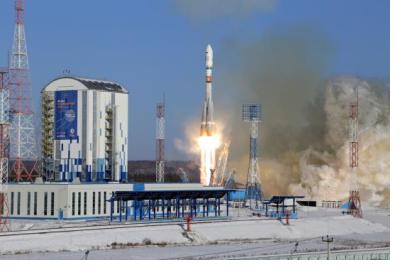Satellites which will be used for the real-time monitoring of emergency situations were successfully put into orbit by the Russian Federation on 1 February.
The remote-sensing Kanopus-Vulkan (or Kanopus-V) satellites No.3 and No. 4 were launched via a Russian Soyuz-2.1a rocket which lifted off from Vostochny Cosmodrome. They are designed to assist in the detection and management of natural disasters as well as man-made emergency situations; including flooding, oil spills and forest fires. Other functions of the satellites include mapping, the study of space-based methods for earthquake forecasting and monitoring the emission of pollutants.
The Kanopus-V satellites are operated by the Russian Federal Space Agency, Roscosmos, in conjunction with the Russian Federal Service for Hydrometeorology and Environmental Monitoring, Roshydromet. The satellites are part of series of satellites which first launched in 2012. Kanopus-V satellites No. 5 and No. 6 are planned to be launched later in 2018. By 2021, at least 15 satellites of this type are planned to be put into orbit.
Nine other international satellites - four S-Net satellites and one D-Star One satellite from Germany; and four LEMUR remote-sensing satellites from the USA - were put into orbit as part of the same mission.
This article was contributed by Jack Kavanagh, UN Online Volunteer mobilized through www.onlinevolunteering.org.

